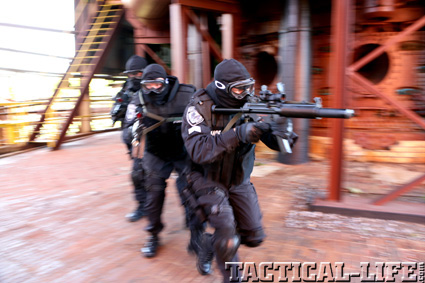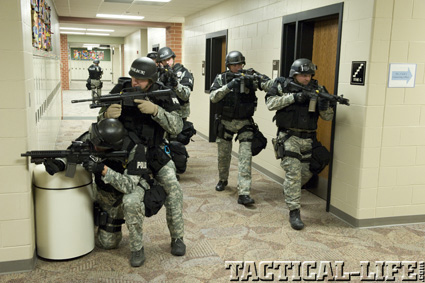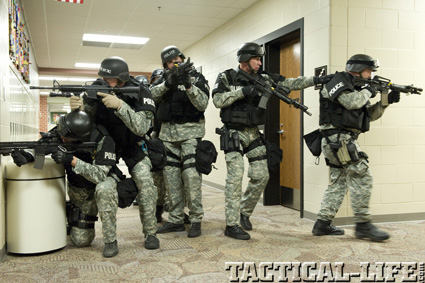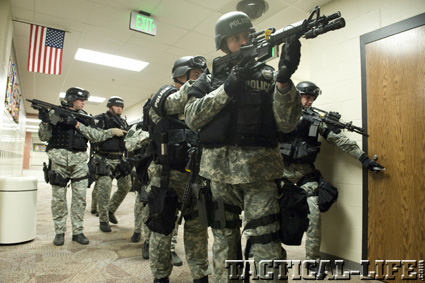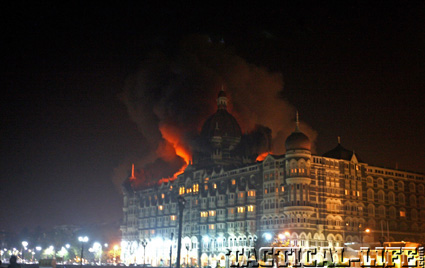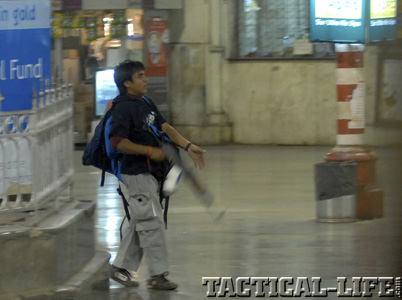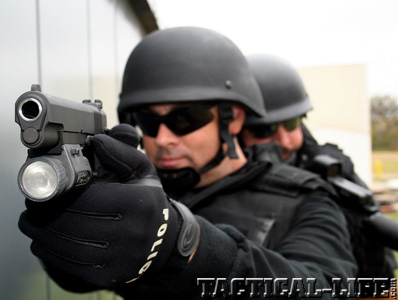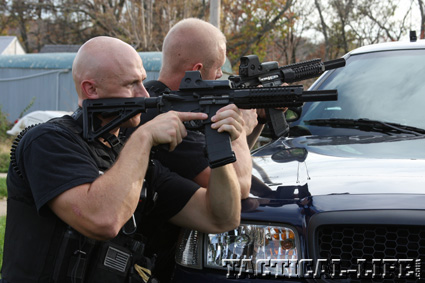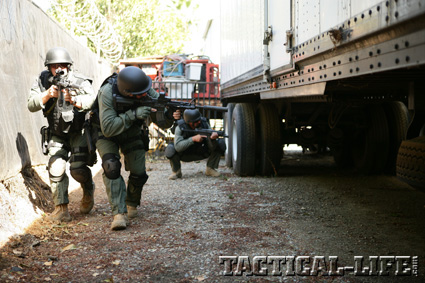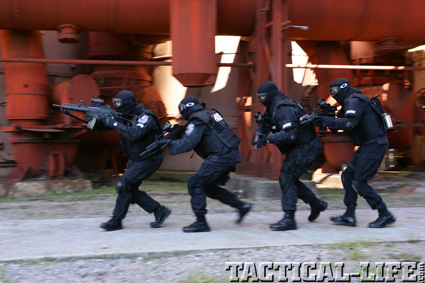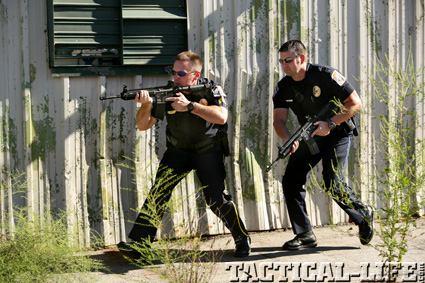Daood Gilani, the son of a prominent Pakistani broadcaster, grew up in the United States. He benefited from all this country has to offer. In 2006, he changed his name to David Headley. Earlier this year, Headley, an American citizen, was sentenced to 35 years in prison for his role in the 2008 coordinated terrorist attacks in Mumbai, India. Headley admitted to conducting advance surveillance for that terrorist operation, which killed 164 people and wounded at least 308 more.
Headley’s actions helped the 10 terrorists, who split into four teams, conduct a military-style assault involving 12 separate shooting and bombing attacks. This assault began on November 26 and ceased on November 29. Those attacks were also reportedly supported by a foreign intelligence service. How many plots like this are being considered here in the U.S.?
In this brazen, unprecedented attack in Mumbai, an American citizen with foreign ties to a terrorist organization helped kill scores of innocent people for almost four days. In Boston, two terrorists—both American citizens, one with ties to foreign terrorists—conducted an attack during the Boston Marathon using two homemade bombs. They killed three people and injured hundreds more. The response to that terrorist incident involved approximately 4,000 American law enforcement officers and National Guardsmen. It also led to the “locking down” of a major American metropolitan area for almost five days.
Advertisement — Continue Reading Below
Consider this: Had there been more terrorists involved, like in Mumbai, or additional bombings, it could have been much worse. The question must be asked: How can we best respond to these domestic terror attacks?
Critical Planning
As Boston proved again, terrorists will seek any opportunity to launch an attack, and such attacks will undoubtedly come. Of particular concern must be so-called “soft targets”—especially events at which a mass of people crowd together. If recent history teaches us one thing, it’s that it’s only a matter of time.
Advertisement — Continue Reading Below
Despite our best intelligence efforts, things will invariably slip through the cracks. At the International Law Enforcement Educators and Trainers Association (ILEETA) conference in 2011, Chief Jeff Chudwin of the Olympia Fields, Illinois, Police Department, who also heads their local SWAT unit, discussed a patrol-level response to these terrorist attacks. “You have to have the mindset ready to respond immediately to these types of attacks,” Chudwin said. “This will be a fight of the patrol officer in the first minutes of the attack. This type of matter is going to be settled in the first 20 minutes, and it’s going to be affected by patrol. The event may still be ongoing, but by responding well and quickly, the severity of the attack can be seriously mitigated.”
Chudwin laid out four essential thoughts to remember about these types of attacks: 1) There is likely to be no specific warning in advance; 2) a failure to immediately and effectively fight will result in the slaughter of innocents; 3) a lack of preparation and training ensures failure; and 4) a lack of command and leadership inspires failure. Being ready to respond and having a plan are the base requirements for an effective response. Without a plan, even a basic plan, the chances of your being able to neutralize a terrorist attack are nil. Don’t let the pursuit of the perfect plan get in the way of formulating a good plan. As long as it’s comprehensive enough to cover any contingencies and flexible enough to be molded to any specific incident, you are on target.
Faster Guns & Gear
Advertisement — Continue Reading Below
A common military axiom asserts that a campaign is won or lost through logistics. The same can be said about responding to a mass-casualty or a terrorist incident. You don’t need to have every single useful asset under your immediate control, but you must have a pre-programmed way to get those assets to you—and get them rapidly engaged. This includes air and, if geography requires it, maritime support.
You also need the right tool to address the right problem. These types of attacks deserve, and often require, more than a handgun response. The threat of terror within the U.S. requires that domestic law enforcement be appropriately armed and equipped to deal with these attacks rapidly and decisively. This includes not only federal and state law enforcement assets, but county and municipal law enforcement as well. Such equipment and armament are not always at hand. Often, competing egos prevent an honest needs analysis to be conducted, but every department must set personal issues aside, examine their capabilities and take the steps needed to get their agencies and personnel up to speed.
Chief Chudwin said, “This is a fight to be fought with rifles, so you need to address the issue of giving every patrol officer (or at least every squad car) a patrol rifle. You need lights on those rifles, and you need high-quality optics. In addition to your soft body armor, you will need to have a plate carrier and plate to protect yourself. You need to have a tourniquet, pressure bandage and other self-care/buddy-care supplies. You need to have water, and it’s awfully good to have PowerBars or some other food to sustain yourself. And you need to have plenty of ammo. There’s no such thing as ‘too much ammo’ unless you’re on fire…or you’re swimming.”
Advertisement — Continue Reading Below
As many combat veterans will attest, you can never have enough guns, gear and ammo. The old SWAT motto is true: “Better to have and not need, than need and not have.” Law enforcement leaders, politicians and the citizens who support them need to realize this. The sight of SWAT trucks driving around Boston in the aftermath of the bombing was likely the only thing that made many residents feel safe.
Training to Win
Perfect practice is perfect—nothing less. The same is true for training: Train as you fight, and fight as you train. If you are not training in the same dynamic in which you’re likely to fight, you are setting yourself up for failure. You will rise or fall to your highest level of training. This is especially true when working under stress and confronting an armed threat.
To adequately confront a multi-pronged terrorist attack, law enforcement training needs to involve everyone from command-level personnel down. In order to respond successfully to these types of incidents, department leaders, supervisors and field personnel must hold regular training exercises. These exercises must focus on incident management, tactics, command and control, communications and consequence management.
Advertisement — Continue Reading Below
Also necessary is a “whole of government” approach to address the myriad issues that will arise during a military-style terrorist attack. An added benefit of preparing for large-scale and multi-agency incident responses is that it translates well into responses for smaller-scaled incidents, allowing agencies to pare back responses for smaller events.
Law enforcement training, to answer a military-style attack, should focus on small-unit basics: leadership, movement and fighting tactics. Anything less is simply not a winning option.
The Pradhan Inquiry Commission, appointed by the Maharashtra Indian government, produced a report about the Mumbai attacks that said, “The ‘war-like’ attack was beyond the capacity of any police force.” It also found fault with the Mumbai Police Commissioner Hasan Gafoor for a lack of leadership during the crisis.
After the Mumbai attack, FBI Director Robert Mueller said the incident “reminds us that terrorists with large agendas and little money can use rudimentary weapons to maximize their impact” and that “the simplest of weapons can be deadly when combined with capability and intent.”
Advertisement — Continue Reading Below
Elliot Chodoff, a political and military analyst specializing in Middle East conflict, once said, “This (terrorism) is not a criminal justice issue—it is a war.” For U.S. law enforcement officers and agencies now operating in an increasingly complex threat environment, having the right plan, preparation and training is a must to be ready to respond to any single or multi-pronged terrorist attack.
